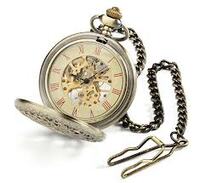 Is it just me, or do we have Professors out there, at a couple of the most reknowned film schools, teaching Production who just do not get it? I continually have students complain to me that they are being taught to never play back their takes on the set!
Is it just me, or do we have Professors out there, at a couple of the most reknowned film schools, teaching Production who just do not get it? I continually have students complain to me that they are being taught to never play back their takes on the set!
I am not an advocate of checking every second of footage that has been shot. I am in total agreement that would constitute a huge waste of precious time.
But, to NEVER check takes is an even bigger and more costly waste of time and money!
The first take of each day, or each time the equipment is completely set up from scratch -- the crew (or at least the DIT) needs to play back at least a significant portion of the virgin take to insure that things are operating correctly. Lots of little things can go wrong during the initial setup: connections, settings, timecode, audio, and way too many more items to list here.
But even feeling confident that all the important bits are working as they should, it is still imperative to always check the final or "printed" take of every scene before tearing down and moving on to the next setup. Things can go wrong at any time, for any reason, on a production set. And the God of Chaos, better known by his first name, Murphy, always prefers to work his evil magic on our most important footage!
Students tell me that their other professors encourage them to skip these playback rituals in order to save time on the set. To save time? Are they kidding me? We are talking about lighting setups that take hours; of make-up sessions that take hours; of fanciful camera moves that take forever to rehearse and rarely advance the storyline. But for something as important and necessary as a minute or two to verify that, indeed, the "shot is in the can" with proper camera work, performance, and audio -- there is no time?
Is there time or money to re-shoot on a future day if the footage turns out to be not usable? Will these re-shoots save our budget and prove to be less costly than having "wasted" 70 seconds on the set to view our "printed take"?
Is this any way to train our students?
Even in the days of pure sprocketed film, we always managed to have video assist to look at in order to verify at least some of the shot parameters (pretty much everything except for exposure, which could only be confirmed after the film stock had been processed by the lab).
While we are on the topic of on set playback, it strikes me as similarly silly to not be able to hear the dialogue during these "dailies".
In the days of sprocketed film, we always provided an audio feed to the video assist technicians so that their "video" takes included the production audio. It certainly made it a lot easier than lip reading!
In today's world, and even more so in the low budget indie world (and, of course, the student realm) -- most production is taking place with electronic cinema rather than sprocketed emulsion. All of these cameras are capable of recording audio.
True, a large number of them are only capable of recording mediocre audio -- but we will save that gripe for a future blog.
So, on most of the senior or thesis level productions, it is the norm to utilize double system recording techniques. That is, to record the production soundtrack separately on a multi-track audio recorder, and to sync the dailies during post production. A workflow that I entirely agree with.
However, that workflow does not help us on the set when we need to play back a recent take. Since our electronic cinema cameras are capable of recording a soundtrack, it just makes perfect sense for the soundmixer to send a feed to the camera as well as recording double system. We get to have our cake and eat it, too!
There will be audio during the playbacks, so that the Director, et al, can watch and HEAR the performance. This also gives the Director an opportunity to judge whether or not a sound problem was serious or can be ignored.
I know, some of the DP's are childish diva's who bitch and moan at the thought of an audio cable. But an audio cable is only inconvenient if the camera is being handheld on fully floating rigs. For those shots, one could use a small wireless receiver. Or, just not do audio on those special takes, but at least grab sound on everything else!
In the world of filmmaking, we ALL have to make some sacrifices now and then. That includes the DP. If they are so ill trained and tempermental that they can only throw tantrums at the thought of audio --- I think that the Producer needs to rethink the hiring selection process.
Playing back the "printed take" with picture and audio is IMPERATIVE. It is not a luxury.
If you want to save time that much, then just take the battery out of your watch. Makes about as much sense, don't you think?